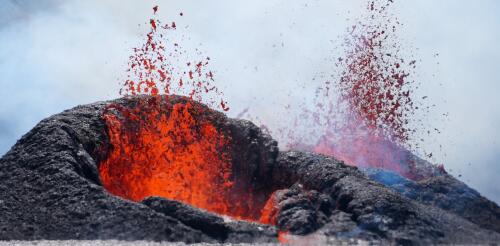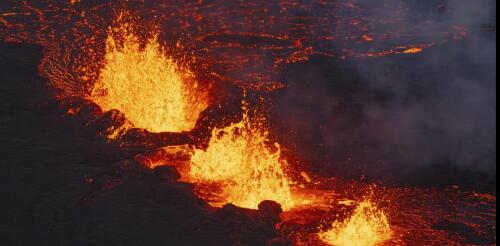Iceland
Curious Kids is a series for children of all ages. If you have a question you’d like an expert to answer, send it to curiouskidsus@theconversation.com. Could we use volcanoes to make electricity? – Lawrence, age 7, Dublin, California Turning red-hot lava from an active volcano into electricity would be dangerous and unreliable. Volcanoes don’t erupt on predictable schedules, and lava cools too quickly. But many countries, including the U.S., have found ways to tap volcanic heat to make electricity. Geothermal energy comes from heat generated by natural processes deep within the Earth. In most areas, this heat only warms rocks and underground water near the surface. In volcanically active regions, however, the heat is much more intense. Sometimes it melts rock, forming magma. Volcanoes act like giant heat vents, raising magma closer to Earth’s surface. Some of this mo...
Fountains of lava erupted from the Sundhnúkur volcanic system in southwest Iceland on Jan. 14, 2024. As the world watched on webcams and social media, lava flows cut off roads and bubbled from a new fissure that invaded the outskirts of the coastal town of Grindavík, burning down at least three houses in their path. Nearby, construction vehicles that had been working for weeks to build large earthen dams and berms in an attempt to divert the lava’s flow had to pull back. The lava flow on Jan. 14, 2024, with Grindavík in the foreground. Iceland Department of Civil Protection Humans have tried many ways to stop lava in the past, from attempting to freeze it in place by cooling it with sea water, to using explosives to disrupt its supply, to building earthen barriers. It’s too soon to say if Iceland’s earthworks will succeed in saving Grindavík, a town of about 3,...
Lava erupted through a fissure in Iceland’s Reykjanes Peninsula on Dec. 18, 2023, shooting almost 100 feet (30 meters) in the air in its early hours. Icelanders had been anticipating an eruption in the area for weeks, ever since a swarm of thousands of small earthquakes began on Oct. 23 northeast of the fishing town of Grindavík, signaling volcanic activity below. In the days that followed those first rumblings, a series of small rifts opened under the town, breaking streets, rupturing utility lines and tilting houses. GPS stations detected the ground sinking and rising over a large area. Geologists from the Icelandic Met Office interpreted the events as evidence that a basalt dike – pressurized magma that forces its way into a fracture – had intruded under Grindavík. The activity there had tapered off by early December, but 2.5 miles (4 kilometers) north of town, the ground under the Svartsengi geothermal power plant was moving....
Thousands of earthquakes in recent weeks have shaken the Icelandic fishing town of Grindavík, about 30 miles (50 kilometers) southwest of the capital Reykjavik. They have triggered evacuations and warnings that a volcanic eruption may be imminent. While the idea of magma rising was no doubt scary for tourists visiting the nearby Blue Lagoon geothermal spa, which was closed as a precaution, Iceland’s residents have learned over centuries to live with their island’s overactive geology. So, why is Iceland so volcanically active? The answer has two parts: One has to do with what geologists unimaginatively call a hotspot, and the other involves giant tectonic plates that are pulling apart right beneath the island. As a geologist, I study both. Eruptions in this region of Iceland tend to flow rather than being explosive, as residents saw in July 2023 and in 2021-22. Kristinn Magnusson/AFP via Getty Images...



